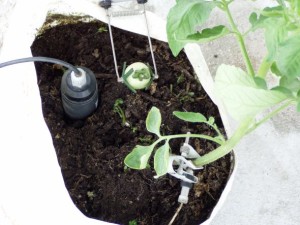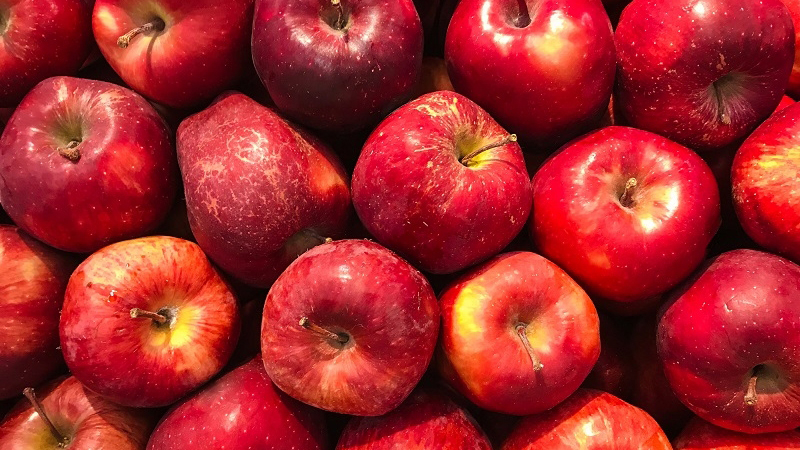Boost Your Bottom Line: Reduce Water Usage
Water availability varies greatly from coast to coast, but that doesn’t mean safeguarding this precious commodity is any less important in areas where it’s more readily available.
The drought in California has reached dire proportions, landing agriculture directly in the regulatory line of fire for those seeking to re-evaluate water usage across the state. Growers are facing continued pressure to do more with less, and as a result, many have risen to the challenge by dramatically reducing their water usage along with other valuable inputs.
Although faced with less severe conditions, growers in Florida have also fine-tuned their irrigation techniques and are managing to conserve water to stay in line with the state’s strict regulations regarding groundwater use and Best Management Practices.
Two operations stand out in the water conservation category: Madera County, CA, almond operation Dan and Tom Rogers Farming, which received the 2014 Farm Water Steward Award for its conservation efforts; and Florida-based Lipman Produce, which has cut water usage by 45% since the implementation of cutting-edge irrigation technology.
Groundwater For California
Tom Rogers grows 175 acres of almonds alongside his brother Dan at Dan and Tom Rogers Farming, located in central California. The operation has been in business for almost 100 years and recently made the switch from surface water to groundwater like many others in the state.
“This year and last year are the only two years in our irrigation district’s history that they have not delivered surface water. We’ve had to run our deep wells to irrigate the last two years. That’s been the only source of water and it’s really putting a strain on the underground water supply,” Tom Rogers says.
To cope with the change, Rogers made some major adjustments to his irrigation system, transitioning from micro sprinklers to double-line drip, which provided the operation a 25% reduction in water usage over the previous year.
The new system, made by irrigation software company Wiseconn, uses fully automated valves that he controls through software on his computer. The system is programmed to release the water in one-hour pulses, moving it laterally through the soil.
“The valve automation is what makes a huge difference,” Rogers explains. “Any time you run water for a long time in one place, you’re going to pool water on the surface and that water can evaporate. What we’re trying to do is match the infiltration rate of the ground. Some ground will allow water to flow in freely, and with other ground it just takes longer to get water in.”
The program is relatively simple, Rogers says. Users can pick any irrigation duration that is appropriate for the crop. This system also gives users the ability to adjust the valve timing to match the crop needs.
Closely Monitoring Crop Needs
To make even better use of his available water, Rogers regularly monitors weather conditions, tracking his trees’ evapotranspiration (ET) rates by using weather stations situated throughout the orchard. That data, combined with ET rates from University of California Cooperative Extension’s Madera County branch, allow Rogers to more accurately assess how his trees use available water.
Rogers explains another recent change to his irrigation system due to a key observation he made regarding tree root systems.
“One thing we learned this year is that almonds do a majority of their work in the top 18 inches of the soil. So I’ve moved most of my soil meters up, and I now read my moisture at 6, 10, 14, 18, and 22 inches because that’s where the activity is,” he says.
As soon as he sees the tree roots pulling farther downward for moisture, he knows it’s time to irrigate. However he’s still sure to monitor the moisture at 36 inches to make sure he’s not overwatering.
Despite the major gains Rogers has made with the new valve system and improved technology, he believes there’s still room for improvement.
“With almonds, we’re using 30% less water today than we were 20 years ago. That’s an amazing step forward. Can we do more? I absolutely think we can,” he says.
Lipman: Leaps And Bounds

Florida-based Lipman Produce uses soil moisture sensors to improve crop quality and conserve water.
Photo credit: Lipman
As with Rogers in California, Lipman Produce based in Immokalee, FL, was already far ahead of the water conservation curve. They had installed drip irrigation into the majority of the operation’s tomato plots by 1985.
“We saw what was going on with drip irrigation in other locations, and for our soil types it’s very advantageous. Our current [irrigation] system has cut our water consumption in [about] half,” explains Lipman’s irrigation technology specialist Randy Moss.
Complementing drip irrigation, the operation uses a variety of technologies to help monitor water consumption including soil moisture meters, central controls on all the irrigation systems, wireless moisture systems, ET evaluations, and phytomonitoring sensors.
The operation’s wireless moisture system from Motorola allows farm managers to monitor water use on every plot, 24 hours a day, according to Moss.
“They’re able to print reports about how many gallons of water actually went to each field along with how many gallons of fertilizer,” he says.
All of this information can be accessed with cell phones and iPads, Moss adds.
Further Refinements
In addition to the software enhancements, Moss has also made major improvements to the operation’s irrigation equipment to help cut back on water.
“We’ve changed primarily to disk filters as opposed to sand medium because they backwash more efficiently. There’s 45% less water,” he says. “The more you filter water, the more energy it takes to get the water through the system. For example, if you use a turbo flow drip tape, you can get by without filtering it quite as hard. There’s lots of little refinements.”
Lipman is also using GPS technology, which Moss has installed in all of the tractors allowing drivers to more precisely lay the drip tape in relation to the crop.
“Everything works better when it’s placed correctly,” he explains.
To take this concept a step further, Moss has also expressed interest in working with Sanjay Shukla at the University of Florida Institute of Food and Agricultural Sciences. They are adjusting bed geometry — which may potentially allow for a reduction in water, fertilizer, and fumigation.
“The idea is to match the shape of the bed to the irrigation system so it waters only what needs to be watered. For drip irrigation there is a water wetting pattern that works best for the drippers. What may be the best profile for seepage irrigation may not be the best for drip,” Moss says.
Protecting Profitability
At the end of the day, Moss values the importance of reducing water use to save money and protect the environment, always keeping Lipman’s bottom line in mind.
“A lot of people are under the assumption that water is free, and it’s not, so it’s to our own advantage to cut down on it as much as possible. We’re under obligation to make our crops profitable, so we’re always walking that fine line between what is enough and how we can get by with less,” he says.
Judging by an overall 50% reduction in water usage and the operation’s continued expansion into the fresh tomato category, Lipman is on track to do just that.
Alexander is a freelance writer based in Colorado.









